Tumi has been making extremely durable suitcases for a really long time, and they’ve gained popularity among frequent flyers and business travelers. If you want to get a suitcase that lasts, it’s a pretty safe bet to go with Tumi. That said, their luggage is really expensive, so you might want to check out other alternatives first.
Lately, Away has gained a very good reputation for making affordable, high-end suitcases. But is Away luggage a worthwhile alternative to Tumi, which costs twice as much? In this article, we’ll compare the durability, features, value, warranty terms, weight, and more of both of these brands, so you have a better idea of which brand is the right choice for you.
A Brief Summary of Tumi
Tumi has been around for a long time – since 1975. It was founded in the USA, and right from the get-go, its luggage was focused on business travelers and airline crews. At the start, they even offered a lifetime warranty on all of their bags, which would pretty much cover any defect. Nowadays, they’re still a really popular brand among frequent travelers, but they’re definitely leaning towards being a luxury product rather than a strictly functional one. Nowadays, Tumi is owned by Samsonite, and they only offer a limited, 5-year warranty. Although their luggage still is extremely durable and innovative, it’s overpriced.
A Brief Summary of Away
Away has only been around for a few years – since 2015. However, during this time, they’ve become a somewhat popular option in the high-end price range (although definitely on the lower end of the spectrum). They essentially make modern, good-looking, hardside suitcases for frequent travelers. All of their bags come with an (almost) unlimited lifetime warranty, they’re packed with a lot of useful features, and they’re really durable. Although their line of travel products is nowhere near Tumi, they’ve grown a lot since their beginnings. Now, instead of just a single model, you can choose between several ones, even ones made from Aluminum, and they offer a wide variety of minimal-looking colors to choose from.
Key Differences Between Tumi and Away Luggage
Does Away Make Lighter Luggage Than Tumi?
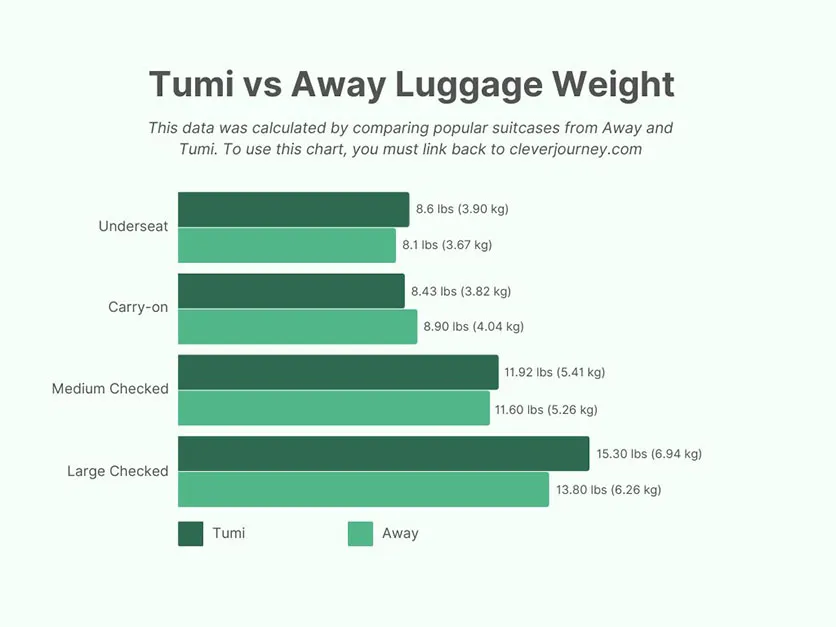
Away makes slightly lighter luggage than Tumi, although not by much. On average, Away’s luggage weighs 5% less than Tumi’s. However, when compared to other luggage brands, both of them make somewhat heavy luggage. In fact, from 31 different luggage brands that we collected data on, Away and Tumi took the last places (Away took the 30th place and Tumi 31th). For example, when compared to Samsonite, Away luggage is 35% heavier, and Tumi is 37% heavier. That’s because both of them make really durable suitcases from expensive, premium (but heavy) materials. They also offer more features than other mid-class options, which all contribute to the weight. Compared to other premium-class options, like Rimowa and Briggs & Riley, they’re both only slightly heavier.
Are Tumi Suitcases More Durable Than Away?
In terms of durability, Tumi does make luggage that tends to last longer than Away, but only slightly. Away’s bags are backed up by an unlimited lifetime warranty, so they need to be built strong to avoid having their customers from sending them in for repairs all the time. Both of these brands use polycarbonate and aluminum for their hardside models, which are the most durable materials used in hardside luggage. That said, Tumi also uses other, unique materials, such as Tegris and SRPP Ballistic, which both are essentially improved versions of polypropylene – they’re more lightweight than polycarbonate and almost as strong.
For improved durability, both of these brands focus on other areas as well, such as extra-durable zippers, latches, locks, handles, corner guards and skid plates, and more. Essentially, both of them are suitable to be used for extra-frequent traveling – they’re built to last. Away hasn’t been around for such a long time, but Tumi has gotten a lot of reviews from long-time customers, which have said that they’ve used their bags for decades without any issues.
Which Brand Is Better at Staying Within the Airline Size Restrictions?
Both Away and Tumi make suitcases that are just within the most common size restrictions for checked and hand luggage. All carry-on suitcases that we collected data on from Away and Tumi were within 22 x 14 x 9 inches, which is the most common airline size requirement for carry-on luggage in North America.
For checked luggage, the main size requirement is 62 linear inches, which amounts to the total sum of the width, height, and depth of each bag. Only one checked bag from Tumi was over this limit – the Tumi Alpha 3 Extended Trip, which is 64 linear inches. All Away bags advertised as checked large were just below 62 linear inches.
Which Brand Has Better Reviews – Tumi or Away?
Away suitcases have been much better-rated by their customers compared to Tumi. Our data revealed that on average, Away suitcases were rated at 4.9 stars out of 5, and Tumi only 4.29 stars. We compared 31 different luggage brands, and Away took #1st place in customer reviews, and Tumi only #28th. To get this data, we gathered the customer reviews from each brand’s most popular models and then calculated the average rating between all of them.
In terms of the actual reviews, very rarely do people complain about the quality of the bag from either of these brands. Instead, the poor reviews mention design issues, lack of packing space or features, warranty-related issues, and similar ones. For Away specifically, most commonly people complained about the lack of packing space and the poorly-designed power bank holder, which often accidentally ejects the power bank. For Tumi, the poor reviews were related to slow support and bad warranty terms, the bag tipping over or other design issues, poor scratch resistance, and lack of packing space. Overall, people were much more satisfied with Away suitcases rather than Tumi.
Do Away Suitcases Come With Better Features?
In terms of features, both Away and Tumi do a really good job. That said, Tumi suitcases usually come with slightly better features than Away. In fact, from all the different luggage brands we’ve reviewed, Tumi’s ones come with the best features (although Briggs & Riley is very close).
Tumi Suitcase Features
- Tumi Tracer. All Tumi bags come with a unique 20-digit code that’s built into the outer shell, at the bottom. In case they get lost, anyone may contact Tumi, present the 20-digit code, and Tumi would get in touch with you. Essentially, it’s an anonymized luggage tag of sorts.
- TSA-approved-locks. Most Tumi bags have TSA-approved combination locks, even the fabric ones.
- Expansion zippers. Almost all Tumi suitcases have an additional zipper, which lets you expand them by additional 1-2 inches for some extra packing room.
- Dual-access zippers. The Tumi Alpha 3 has a dual-access front compartment, which lets you access the contents from the top of the suitcase without fully opening it up. This is useful when going through security.
- Leather luggage tags. All Tumi bags come with a leather exterior luggage tag, and also another one on the inside, in case the exterior one gets torn off.
- USB power bank ports. Some Tumi suitcases will also have a USB port on the exterior. You can put your power bank in the interior in a dedicated pocket, connect it to a built-in USB wire, and you’ll be able to change your devices through the exterior USB port on the go.
- Suit compartments. Some Tumi bags will have a dedicated compartment, which is meant for packing your suits. Usually, it will include a garment sleeve and a hanger bracket. This will reduce the wrinkling of your suits and dress shirts.
- Tie-down mesh dividers. Usually, one side of the interior is divided with a mesh panel, which keeps everything in place.
- Dura-fold corners. Tumi’s hardside and softside suitcases have reinforced corners for added durability. Essentially, they’ve used multiple layers of the same material to improve their resistance.
- Double spinner wheels. Most Tumi suitcases have large, beefy, double spinner wheels, which roll really smoothly.
- Tumi’s Omega zippers. Tumi’s zipper heads are built to fall off easily. This sounds counter-intuitive, but zipper heads often get stuck on the luggage conveyor belts, and when they do, they ruin the whole zipper or even the bag. If this happens, you can just easily replace the zipper head.
Away Suitcase Features
- Built-in (removable) power banks. All Away bags come with an optional power bank upgrade, which lets you charge your devices by plugging them directly into the suitcase. It’s hidden underneath the retractable handle, and with a push of a button, you can remove the power bank for going through security or recharging.
- Double, rubber-coated spinner wheels. All Away suitcases come with really quiet, and smooth-rolling double spinner wheels.
- Laptop front pockets. You can also get their regular carry-on in a different variation, which comes with a nylon pocket on the front, meant to pack your laptop and other quick-grab items.
- Tie-down panels. Similar to Tumi, Away uses the same tie-down panel system for keeping the interior of the bag organized.
- TSA-approved locks. All Away bags will come with a TSA-approved combination lock for accessing the main compartment.
- Laundry bags. All of their suitcases also have a water-resistant laundry bag, which is meant for separating all of your clean clothes from your dirty ones.
- Leather luggage tags. As with Tumi, Away’s suitcases also come with leather luggage tags attached to the handle on the exterior. You can put your information there in case the bag gets lost.
- Expansion zippers. Some Away suitcases will also have expandable zippers, with add more packing room.
Which Brand Offers More Value – Away or Tumi?
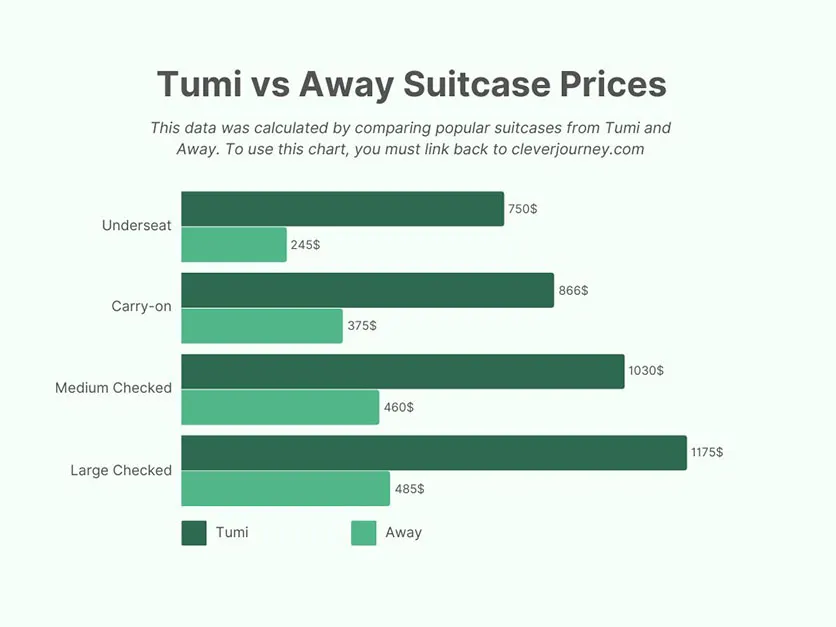
A suitcase from Away costs 391$ on average, and from Tumi 955$. For the price of a single Tumi suitcase, you could buy 2 suitcases from Away, and still have some money left in your pocket. The price differences are really high, especially considering that their products are somewhat similar.
In terms of value, we definitely think that Tumi is too overpriced. At the same time, we think that right now, Away luggage is a bit underpriced – for the quality, warranty, features, etc., compared to the competition, you should expect to pay 500$ on average. For example, Briggs & Riley, which is another high-end manufacturer, sells their luggage for just $579 on average, and we consider that a very fair price because their luggage is pretty much indestructible. With Tumi, you’re overpaying for the brand. Away, on the other hand, doesn’t have an established brand, so they need to keep their prices on the lower end until they do.
Away Warranty Terms vs Tumi
Away comes with a much better warranty than Tumi, even though their luggage costs less. Their luggage is protected with a limited lifetime warranty, but it’s definitely leaning towards an “unlimited” one. Away will repair any defect that affects the functionality of the suitcase for a lifetime, such as cracks in the shell, broken wheels, handles, or zippers. Transportation damage is also included (for example, when it breaks while checked in), and they’ll cover all shipping costs. The only issues they won’t fix are cosmetic damage, accidents, misuse, and normal wear and tear.
Tumi also has a pretty good 5-year warranty, but for a suitcase that’s so expensive, it definitely should be better. During the first year, it’s essentially identical to Away – they’ll cover all kinds of damages, including transportation damage, and cover all related shipping costs. During years 2-5, they’ll only cover manufacturing defects, transportation damage isn’t covered, and you’ll be responsible for covering the shipping costs to their repair centers. After that, you’ll only be able to send it in for paid repairs.
Conclusion: Should You Get a Suitcase From Away or Tumi?
We would definitely recommend getting a suitcase from Away over Tumi. Tumi has its advantages though – their luggage is more durable than Away’s, and it comes with better features. That said, their luggage is really overpriced. For just 40% of the price, you can get a similar suitcase from Away, that will perform really similarly, if not a bit better.
Although Away’s luggage is slightly less durable than Tumi’s, it’s still impressively well-made. It’s durable enough to withstand extra frequent travel, and even if something breaks, it’s backed up by a lifetime warranty that covers the functionality of the suitcase. They also offer an impressive set of features, their luggage is still a bit underpriced compared to other competitors, it’s good-looking, and it’s extremely well-reviewed by their customers.
The only issue with Away is that they only make hardside suitcases. If you’re looking for a softside one, we’d recommend getting something from Briggs & Riley instead, such as the Briggs & Riley Baseline. It’s a bit more expensive than away, but it has better features, it’s more durable, and it’s backed up by an even better lifetime warranty.
Best Suitcases From Tumi and Away
Best Hardside Plastic Suitcase From Away: The Carry-On
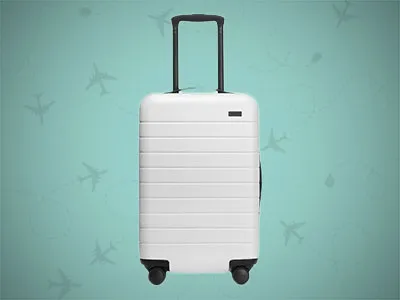
| Key Features: |
|---|
| – 21.7 x 13.7 x 9 in (55 x 35 x 23 cm) |
| – 7.1 lbs (3.22 kg) |
| – Polycarbonate |
| – Editors rating: 4.6 |
| SHOP NOW |
The Away Classic carry-on is essentially the main model that they started with. Over the years, it’s been updated several times and it’s still their best-selling model. Although it’s the cheapest one in their line, we think that it’s the best one.
In size, it’s just below 22 x 14 x 9 inches (56 x 36 x 23 cm), which means that you’ll be able to take it as a carry-on with most airlines. It weighs 7.1 lbs (3.22 kg), which, for Away’s standards, is considered really lightweight. However, when compared to other hardside carry-ons in the same size category, it’s pretty much right in the middle – neither too heavy nor too lightweight. In fact, it’s exactly in the middle, because our research revealed that hardside carry-ons weigh 7.11 lbs on average.
It’s made from polycarbonate, which is the most durable plastic used in hardside luggage. It doesn’t have reinforced corners or other protective elements, however, pretty much nobody complains about durability issues, which speaks for how well it’s made. It also comes with nice and beefy spinner wheels, which are somewhat ingrained into the main structure of the frame, so they’re less likely to break off. They’re also coated with rubber, so they roll really quietly and smoothly.
From the exterior, it’s fitted with a TSA-approved combination lock, which keeps the inside contents safe. Upon receiving the bag, you can set a code that you prefer and that’s easy to remember. It also has top, side, and bottom handles for lifting it up to the overhead compartments, and it also comes with a leather luggage tag attached to one of them.
The interior of the Away carry-on is also pretty well-organized. One side is completely divided with a fabric sheet, so you can use it to pack larger items, like shoes, bulky clothing, and similar items. The other side is divided with a fabric tie-down panel, which also has a built-in zippered pocket for organizing all the smaller items. You’ll also find a laundry bag inside for separating your dirty clothes from clean ones.
The Away carry-on is a perfect choice for someone who’s going to travel a lot. It offers enough packing space, it’s durable, it’s good-looking, backed up by a solid warranty, and it isn’t too expensive.
Best Hardside Plastic Suitcase From Tumi: Latitude
| Key Features: |
|---|
| – 22 x 14 x 9 in (55.9 x 35.6 x 22.9 cm) |
| – 6.22 lbs (2.82 kg) |
| – Polycarbonate |
| – Editors rating: 4.6 |
| SHOP NOW |
The Latitude is currently, Tumi’s best plastic hardside carry-on. It’s really lightweight, durable, and good-looking.
It’s built from Tumi’s Ballistic SRPP, which is a unique material made by Tumi. Essentially, it’s 100% polypropylene, which is a lighter and a bit less durable material than polycarbonate. However, tumi has weaved it in threads, and this material consists of several composite layers, which supposedly make it almost as durable as polycarbonate, just lighter. For improved longevity, they’ve also used corner guards, which reduce the chance of the suitcase cracking under pressure.
Its main selling point is its weight, which measures just 6.22 lbs (2.82 kg). This is considerably lighter than similar plastic suitcases in this size category. In fact, on average, it’s 15% lighter than other plastic carry-ons. It’s also sized exactly at 22 x 14 x 9 inches (56 x 36 x 23 cm), which means that it’ll fit the size requirements for most international flights. This makes it an ideal choice if you’re planning on flying internationally – the weight savings and efficient size will help you maximize your packing space in terms of weight and space.
The Latitude is also fitted with several features, such as four double spinner wheels, which roll really smoothly, a TSA-approved lock, and the Tumi tracer. It also comes with exterior and interior luggage tags in case it gets lost.
From the interior, it’s laid out very similarly to the Away carry-on. One side is completely divided with a fabric sheet and the other one with tie-down panels. The only difference is that the Latitude doesn’t come with a laundry bag, it has a hanger bracket for hanging suits in garment sleeves, and it has two smaller pockets instead of one larger one.
Its main drawback is its price – it costs more than twice as much as the Away carry-on. So we’d only recommend it if you’re fine with overpaying just to get the best-in-class suitcase. Another one is its glossy finish, which gets scratched somewhat easily. Luckily, its patterned grooves hide most of the scratches. If you have the budget, then the Latitude is pretty much the best plastic carry-on that you’ll find.
Best Aluminum Suitcase From Away: The Aluminum Carry-On
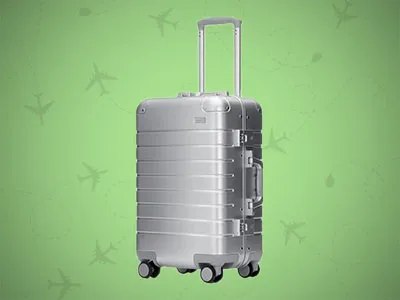
| Key Features: |
|---|
| – 21.5 x 13.5 x 9 in (55 x 34 x 23 cm) |
| – 10.7 lbs (4.85 kg) |
| – Aluminum |
| – Editors rating: 4.8 |
| SHOP NOW |
The Away aluminum carry-on is Away’s most expensive suitcase, but in a sense, it actually isn’t. When compared to other aluminum suitcases, it’s actually really cheap. It’s almost half of what the Tumi’s aluminum suitcase costs, and in some aspects, it’s even better.
Similar to all other Away’s carry-ons, it’s sized to be just under 22 x 14 x 9 inches (56 x 36 x 23 cm), which is the most common hand luggage size restriction for airlines. Although it may seem fairly heavy, weighing 10.7 lbs (4.85 kg), it’s almost 1 lb lighter than Tumi’s aluminum carry-on, and you have to remember that it’s built from aluminum, which is a heavy material.
You can pretty much expect the Away aluminum carry-on to last you a lifetime since it’s built from 100% aircraft-grade aluminum. Instead of cracking, aluminum tends to bend, so you might see a few dents and scratches, but it should functionally last you decades. It’s also backed up by Away’s lifetime warranty, which should cover the wheels, handles, locks, and latches.
Instead of having a zipper, this suitcase uses two latches, each with a TSA-approved combination lock. So you can set two different codes, essentially improving its security, or set them both to the same code, so it’s easier to remember. They’ve also used four double spinner wheels with rubberized coating, and it comes with top and side handles that have spring-loaded release mechanisms, so the handles don’t hit against the case all the time.
The Away aluminum carry-on’s interior is fairly similar to the Latitude. It’s split into two parts, and both of them are divided with tie-down panels with built-in zippered pockets.
If you’re looking for a suitcase that will last you a lifetime, then the Away aluminum carry-on is a really solid choice. It may seem expensive, but it actually isn’t, considering its indestructible nature and the prices of similar aluminum suitcases from other competitors.
Best Aluminum Suitcase From Tumi: 19 Degree Aluminum Continental
| Key Features: |
|---|
| – 22. x 16 x 9 in (56 x 40.5 x 23 cm) |
| – 11.8 lbs (5.35 kg) |
| – Aluminum |
| – Editors rating: 4.7 |
| SHOP NOW |
The Tumi 19 Degree Aluminum suitcase is one of the best aluminum suitcases that you’ll find. Its main downside is that it’s very expensive – not as expensive as Rimowa, but still way more expensive compared to Away. It’s better, but only slightly.
In size, the 19-degree continental is 22 x 16 x 9 inches, but you can also get it in the international version, which is 22 x 14 x 9 inches in size. The continental will be suitable for business-class flights within the US, but it’s too wide to fly with some cheaper airlines that have stricter size limits. It’s also pretty heavy, weighing 11.8 lbs (5.35 kg), which means that it’s better suited to fly with airlines that have looser hand baggage weight restrictions.
Similar to the Away Aluminum carry-on, the 19-degree is also made from 100% aircraft-grade aluminum. It also has corner guards and beefy hardware, like thick double spinner wheels, handles with leather elements, and thick opening latches.
The main compartment is protected with two TSA-approved locks. When you open it up, you’ll find that both of its sides are separated with fabric dividers, which each have additional mesh pockets for storing all the smaller items. It also has a hanger bracket for packing suits on one side, which is good for reducing wrinkling.
Overall, the Tumi Aluminum 19-degree aluminum carry-on is a really solid, choice – even better than the Away aluminum carry-on. That said, it’s a bit too expensive to be considered a “good deal”. If you manage to get it in a sale, then it’s a really great option for frequent traveling.



 (5 votes, average: 4.40 out of 5)
(5 votes, average: 4.40 out of 5)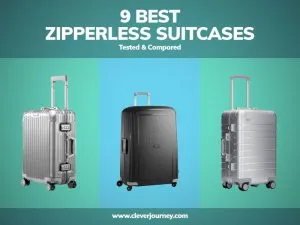
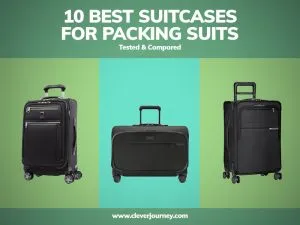
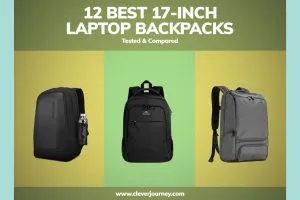
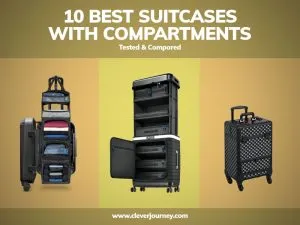
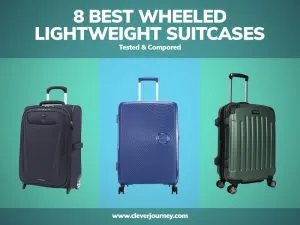









Oscar, greetings from snowy Maine! Your post reminded me of the exhilarating experience of dogsledding I had a while back. Has adrenaline been associated with narrative immersion in literature?🛷 Also, does your protagonist fancy hot cocoa or an ice-cold beer after their canine-powered expedition? 🍺 Might add more depth to the character and story, just a thought. Narrative detail never stopped enriching our literature cravings, right? Engage us further, Oscar! Looking forward to the suspenseful narrative arc ferris wheel ride. Till next time!